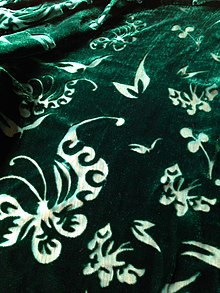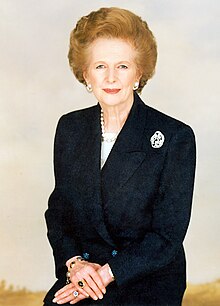Aesthetics (textile)
[1][2] Aesthetics imply the appearance and attraction of textile products; it includes the color and texture of the material.
When combined with fabric construction, the finish of the clothing material, garment fit, style, and fashion compatibility, colours create an aesthetic comfort.
Human ingenuity and the urge to improve one's appearance led, over time, to the development of complex fabrics and, in the last hundred years, to remarkable technological advancement.
These factors are produced using methods of textiles manufacturing and the application of finishes such as dyeing, printing, glazing, and napping.
[15][16] Texture in textiles characterizes the surface as rough or smooth, which is determined by tactile and visual perception.
[17] It refers to the way fabrics feel against the skin or in the hand and conveys information about the cloth's softness and smoothness.
Texture in textiles refers to the surface's roughness or smoothness, as determined by tactile and visual perception.
[35] These are some chemical finishes that change the surface characteristics: Most of the aesthetic properties of textile materials are subjective and determined by visual and tactile sensations.
[40] The system is equipped with standardised testing machines capable of objectively determining specific physical properties.
KES-F can be used to determine the fabric's roughness and smoothness, friction, sheerness, thickness, tensile strength, elasticity, drape, and compression, among other properties.
Users have five basic performance criteria to consider: appearance (aesthetics of the product), comfort, durability, maintenance, and cost.
[45][46][2]: 21 According to the consumer preference study, the appearance factor is considered one of the top priorities when making buying decisions about clothing.
[48][49] The study of how people use clothing and adornments to signify cultural and societal status is known as the "semiotics of dress.
"[50] Different cultures, occasions, and social statuses command specific aesthetics that include clothing and decorations.
[54] During the 1960s, Jackie Kennedy was a great fashion icon for American women, and her style became a sign of wealth, power, and distinction.







